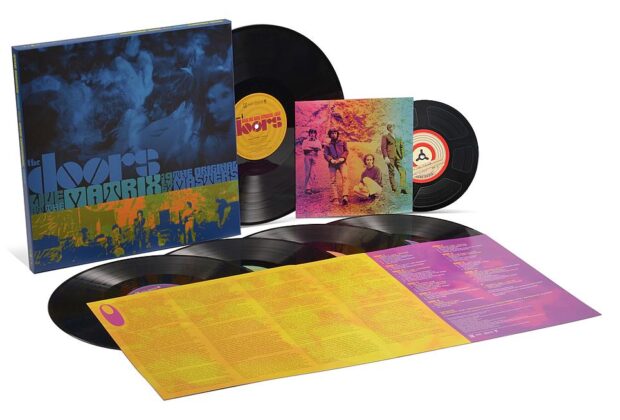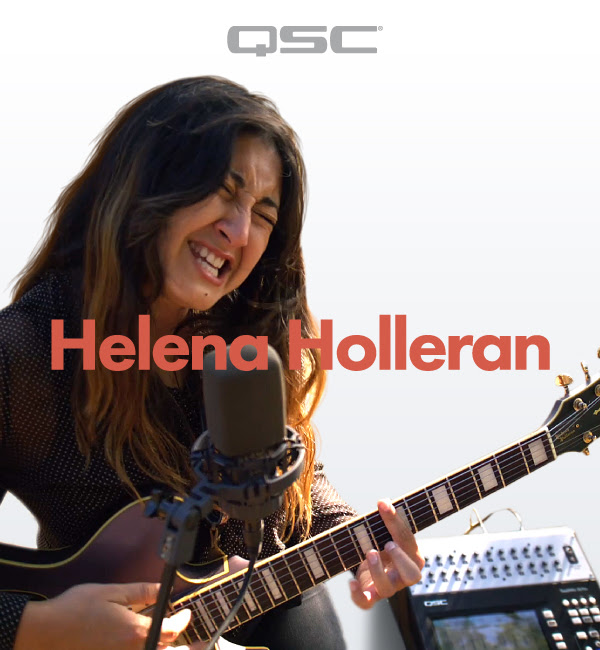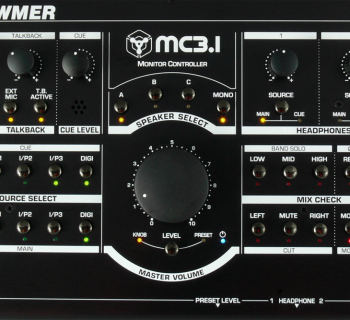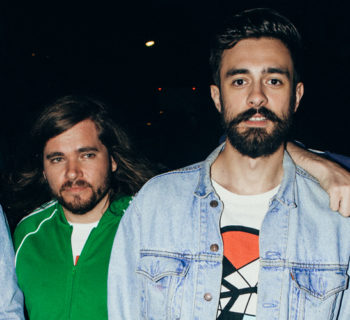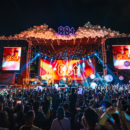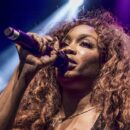"You forget in the Summer of Love there is the Vietnam War on everyone’s mind. San Francisco was quiet. They stared at us like we were from Mars. We knew that was making an impact." --John Densmore, 2007 interview with Harvey Kubernik.
The Doors were a few months away from stardom in March 1967 when they played five sparsely attended shows at a small club in San Francisco called The Matrix. These uninhibited performances would have been fleeting if not for Peter Abram, who co-owned the pizza parlor-turned-nightclub with Jefferson Airplane founder Marty Balin.
An avid recordist, Abram taped concerts at The Matrix regularly and his recordings of The Doors, made between March 7-11, 1967, spawned one of the band's most storied bootlegs. At long last, all known Matrix recordings, sourced entirely from Abram's original master recordings, will be released on September 8.
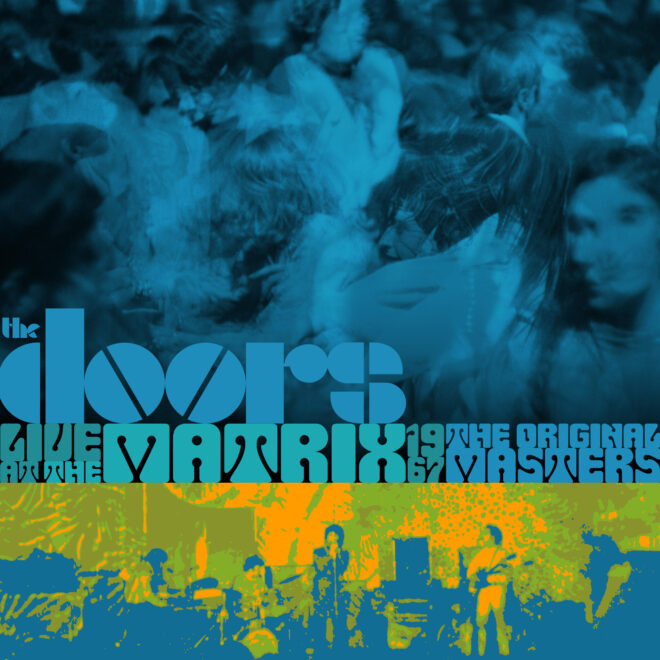
LIVE AT THE MATRIX 1967: THE ORIGINAL MASTERS will be available on September 8 as 3-CD ($29.98) and 5-LP ($124.98) sets. Production of the vinyl version is limited to 14,000 numbered (CD 21,000) copies worldwide. The band's March 7 performance of the jazz instrumental "Bag's Groove" is exclusive to the vinyl set and comes on a 7" single. "Bag's Groove" is one of two never-before-heard recordings.
Bootlegs of The Matrix shows have circulated among fans for years and were popular despite the poor audio quality of most copies. The sound began improving in 1997 when the first two songs from The Matrix shows were officially released on The Doors: Box Set. Even more performances followed in 2008 on Live at the Matrix 1967; regrettably, it was discovered soon after that all the recordings were sourced from third-generation tapes, not the originals.
Today, Abram's original recordings have been remastered by Bruce Botnick, The Doors’ longtime engineer/mixer, for official release. The vinyl version of LIVE AT THE MATRIX 1967: THE ORIGINAL MASTERS includes all 37 songs from the shows sourced from the master tapes. Except for 15 songs released in 2017 and 2018 as Record Store Day exclusives, most of the newly upgraded live recordings are making their debut in the collection, including eight that have never been featured on any of the previous Matrix releases.
It's easy to understand the enduring appeal of these vintage performances by Jim Morrison, Ray Manzarek, Robby Krieger, and John Densmore. Recorded only a few months before "Light My Fire" propelled the band to worldwide success, the tapes capture The Doors playing a wide range of songs, including several from their self-titled debut, like "Break On Through," "Soul Kitchen," and "The End."
They also performed half the songs destined for the group's soon-to-be-recorded second album, Strange Days, including early performances of "Moonlight Drive" and "People Are Strange." 15 Sets of music over five nights at The Matrix gave the band time to indulge its love of the blues with extended covers of "I'm A King Bee" and "Crawling King Snake." The Doors even delivered an instrumental version of "Summertime."
Joel Selvin writes in the collection's liner notes: "They were young, fresh, and uninhibited, spreading their wings to fly. The tapes are raw, savage, rough around the edges. This is pure Doors: unselfconscious and unspoiled."
LIVE AT THE MATRIX 1967: THE ORIGINAL MASTERS
5-LP Track Listing
LP One: Side One
(March 7, 1967) First Set
1. “Back Door Man”
2. “My Eyes Have Seen You” *
3. “Soul Kitchen”
4. “All Blues” – Instrumental *
Side Two
1. “Get Out Of My Life Woman” **
2. “When The Music’s Over” *
LP Two: Side One
(March 7, 1967) Second Set
1. “Close To You” **
2. “Crawling King Snake” **
3. “I Can’t See Your Face In My Mind”
4. “People Are Strange”
5. “Alabama Song (Whisky Bar)”
Side Two
1. “Crystal Ship”
2. “Twentieth Century Fox”
Third Set
3. “Moonlight Drive”
4. “Summer’s Almost Gone” *
5. “Unhappy Girl”
LP Three: Side One
(March 7, 1967) Third Set
1. “Woman Is A Devil/Rock Me Baby” **
2. “Break On Through (To The Other Side)” **
3. “Light My Fire”
Side Two
1. “The End”
2. “The End” (Partial) / Let’s Feed Ice Cream To The Rats (from March 8 or 9, 1967)
LP Four: Side One
(March 10, 1967) First Set
1. “My Eyes Have Seen You”
2. “Soul Kitchen” **
3. “I Can’t See Your Face In My Mind” **
4. “People Are Strange” **
Side Two
1. “When The Music’s Over”
Second Set
2. “Money” **
3. “Who Do You Love” **
LP Five: Side One
(March 10, 1967) Second Set
1. “Moonlight Drive” *
2. “Summer’s Almost Gone”
3. “I’m A King Bee” **
4. “Gloria” **
Side Two
1. “Break On Through (To The Other Side)” *
Third Set
2. “Summertime” – Instrumental **
3. “Back Door Man “**
4. “Alabama Song (Whisky Bar)” *
7” Single
March 7, 1967 (First Set)
“Bag’s Groove” – Instrumental *
*Previously Unreleased
**First Time Released From Original Master Tapes
During early 1966 I was at my friend David Wolfe’s house in Culver City California on Selmarine Drive when Jim Morrison of a new band called the Doors appeared on 90 minute 10:00 pm talk television The Joe Pyne Show on KTTV channel 11. We both remember the confrontational host in a heated argument with Morrison in Pyne’s Beef Box.
I first heard the Doors at Fairfax High School in West Hollywood on Burbank-based AM radio station KBLA during deejay Dave Diamond’s Diamond Mine shift. He constantly spun the acetate of their debut long player in late December 1966 before the official January ’67 album retail release.
The erudite radio broadcaster explained the origin of their name from the title of a book by Aldous Huxley, The Doors of Perception, derived from a line in William Blake’s The Marriage of Heaven and Hell.
I loved Diamond seguing from “Soul Kitchen” to “Twentieth Century Fox.” Some of it sounded like music they had on KGFJ-AM, my R&B channel, and KBCA-FM, the jazz station. “Break on Through (To the Other Side)” reminded me of Ray Charles’ “What’d I Say” from the 1963 Kenny Burrell and Jimmy Smith jazz arrangement recording of his tune on the Verve label.
I purchased The Doors in monaural on the Elektra label that January of 1967 at The Frigate record shop on Crescent Heights and Third Street. I had no idea as a teenager that The Frigate was literally right near the Maharishi Mahesh Yogi-founded Third Street Meditation Center where Ray Manzarek initially met John Densmore and Robby Krieger in 1965, then introducing the duo to his buddy Jim Morrison.
I then saw the Doors in January 1967 on the Casey Kasem-hosted afternoon television show Shebang! In July I caught the Doors on Dick Clark’s American Bandstand. I danced occasionally on both Hollywood-based programs 1966-1967.
On April 9, 1967 my cousin Sheila Kubernick telephoned me very late at night. She had just returned from The Cheetah club in Venice and witnessed the Doors in person. Sheila, a Cher-lookalike at the time, was still in a trance, courtesy of Jim Morrison. Shelia later drove my brother Kenny and I to the Valley Music Center for a concert by the Seeds still reminiscing about the Doors. I later saw the band in Inglewood at the Forum in 1968.
On July 10, 2017 I was at The Rock and Roll Hall of Fame’s Library & Archives where I was invited to be a guest speaker in their Author Series in Cleveland, Ohio.
Before my appearance, one of the curatorial assistants took me into the private air-conditioned storage locker room not open to the viewing public. “We knew you were coming today and pulled out some specific items we wanted you to see.”
I was handed an envelope containing Jim Morrison’s diploma from UCLA.
In a 1966 interview with Hollywood-based Radio station KFWB Hitline magazine, Balin mentioned that “Haight Street is just like [London’s] Carnaby Street. Long hair, boutiques, ice-cream parlors, band sessions and plays in the park, pie fights-it’s just great.”
Q: Tell me about the Matrix Club.
A: I opened the Matrix Club in 1965 in San Francisco. Booked bands in 1966 and ’67. As a solo performer in 1964, ’65, I started to use a 12-string guitar with a pickup on it and wanted to use drums. I had played the Hungry I, The Purple Onion, The Jazz Workshop as a folk band group. I went back to get some jobs and no one would hire me because I was too loud. So after being turned down by everybody, I was playing a folk club.
“In the evening I would perform and these four nurses used to come who liked me. Then they started coming with their boyfriends and during the break I was sitting and talking to their boyfriends and they were all talking about investing this money they had together and didn’t know what to do with it. So I said, “Well give it to me.” And I said, ‘I’ll build a nightclub and I’ll put a band in it and you can have the night club and you can have the band.’ ‘OK.’
“I roamed around and went into this bar down on Fillmore that looked empty on a Friday night. Not many people in it. So, I came back Saturday night and there were very few people in the bar. So I went and told these guys I thought we could get that bar because it’s not doing great biz. So they went and they got the license from that guy and we started fixing it up and making it into the Matrix. As we were doing that people, you know, people were comin’ in lookin’ for places to play. The infamous Warlocks. Janis [Joplin]. All these other people were looking for places to play, too. So I had an immediate influx. And besides that, I had jazz guys playing, there, blues guys, cats from The Committee. They would do stand up. It took off right off the bat.
I didn’t see the Doors at the Matrix Club but saw them many times. We worked and played with them many times in 1967 and ’68. We did some high school and college shows together and toured Europe.
“I loved the Doors. Oh my God! I thought Jim Morrison was fantastic. I fortunately became a friend and hung out and got to drink with him. He’d read me his poems all the time. I thought that was funny. I thought Jim was great as an artist. Who knows? He would have probably gone into film and done movies. The guy was a good lookin’ dude, man. I’d go out with him and try and pick up chicks and I was like invisible.
Harvey Kubernik is the author of 20 books, including 2009’s Canyon Of Dreams: The Magic And The Music Of Laurel Canyon and 2014’s Turn Up The Radio! Rock, Pop and Roll In Los Angeles 1956-1972. Sterling/Barnes and Noble in 2018 published Harvey and Kenneth Kubernik’s The Story Of The Band: From Big Pink To The Last Waltz. In2021 they wrote Jimi Hendrix: Voodoo Child for Sterling/Barnes and Noble. Otherworld Cottage Industries in 2020 published Harvey’s Docs That Rock, Music That Matters.
Kubernik’s 1995 interview, Berry Gordy: A Conversation With Mr. Motown appears in The Pop, Rock & Soul Reader edited by David Brackett published in 2019 by Oxford University Press. Brackett is a Professor of Musicology in the Schulich School of Music at McGill University in Canada. The lineup includes LeRoi Jones, Johnny Otis, Ellen Willis, Nat Hentoff, Jerry Wexler, Jim Delehant, Ralph J. Gleason, Greil Marcus, and Cameron Crowe.
Kubernik’s writings are in several book anthologies. Most notably, The Rolling Stone Book Of The Beats and Drinking With Bukowski. Harvey wrote the liner notes to the CD re-releases of Carole King’s Tapestry, The Essential Carole King, Allen Ginsberg’s Kaddish, Elvis Presley The ’68 Comeback Special, The Ramones’ End of the Century and Big Brother & the Holding Company Captured Live at The Monterey International Pop Festival.
During 2006 Harvey spoke at the special hearings initiated by The Library of Congress held in Hollywood, California, discussing archiving practices and audiotape preservation.
In 2017 Harvey Kubernik appeared at the Rock and Roll Hall of Fame in Cleveland, Ohio, as part of their Distinguished Speakers Series.
During 2022, producer/director Ron Chapman interviewed Harvey and hired him as a consultant for his music documentary, REVIVAL69: The Concert That Rocked the World, which celebrates and chronicles a 1969 rock festival in Toronto, Canada that spotlighted the debut of John Lennon's Plastic Ono Band along with the Doors, Alice Cooper, Chuck Berry, Little Richard, Bob Diddley, Jerry Lee Lewis and Gene Vincent. Shout! Factory has picked up the title for North American distribution.
In 2020, Harvey served as a consultant on the 2-part documentary Laurel Canyon: A Place in Time directed by Alison Ellwood. Kubernik, Henry Diltz and Gary Strobl collaborated with ABC-TV in 2011 for their Emmy-winning one hour Eye on L.A. Legends of Laurel Canyon program hosted by Tina Malave.
Harvey was lensed for the 2013 BBC-TV documentary on Bobby Womack Across 110th Street, directed by James Meycock. Bobby Womack, Ronnie Wood from the Rolling Stones, Regina Womack, Damon Albarn of Blur/the Gorillaz, and Antonio Vargas are spotlighted.
Kubernik served as Consulting Producer on the 2010 singer-songwriter documentary, Troubadours: Carole King/James Taylor & the Rise of the Singer-Songwriter, directed by Morgan Neville. The film was accepted at the 2011 Sundance Film Festival in the documentary category. On March 2, 2011, PBS-TV broadcast the movie in their acclaimed American Masters
Kubernik was a featured talking head in director Matthew O’Casey’s 2012 Queen at 40 documentary broadcast on BBC Television and released as a DVD Queen: Days Of Our Lives in 2014 via Eagle Rock Entertainment.
In May 2014, filmmaker O’Casey lensed Kubernik in his BBC-TV documentary on singer Meat Loaf, titled Meat Loaf; In and Out of Hell, broadcast in the U.S. market in 2016 on the Showtime Cable TV channel.
In 2019 Harvey appeared as an interview subject in the David Tourje-directed short documentary entitled John Van Hamersveld: Crazy World Ain't It that had its World Premiere in 2019 at the Santa Barbara Film Festival. The landmark colorful career of illustrator, designer, artist and photographer Van Hamersveld is discussed by Harvey , visual artist Shepard Fairey, world champion surfer Shaun Thompson, Jeff Ho of the legendary Zephyr Surf Team, graphic designer Louise Sandhous and others. Van Hamersveld designed the iconic Endless Summer visual image properties and album covers for the Beach Boys, the Beatles, the Rolling Stones, Jefferson Airplane, John Hiatt, PIL, Blondie and the 2005 Cream reunion concert.
During 2023, Harvey Kubernik is co-producing, co-writing and co-editing a music documentary with director Christopher M. Allport, The Sound of Gold. The film chronicles the landmark Gold Star recording studios in Hollywood and the 100 hit records cut at the legendary studio in the 1951-1984 era.

